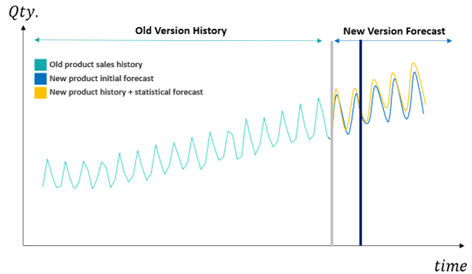New product Forecasting: New Version (Product improvements)

By Roei Aviram, CEO at Intelichain
Oftentimes we find on the supermarket shelves products with a new package or label saying – “new and improved”, which clearly highlights a product improvement has taken place, hence the name “New Product Version” or “Product Improvement”.
This category of NPI refers to new products that replace existing products by providing improved performance or greater perceived value. A good example for that might be with Crest regularly promotes “new and improved” versions of its toothpastes for which the fluoride formula has undergone simple modifications. To distinguish between the old product and the new one, the company sets in their IT systems a new item (SKU) making them in fact 2 separate items. Business-wise, traditional forecasting software don’t know both SKUs are connected so what it does is to apply new algorithm on the new SKU (typically simple exponential smoothing) since no sufficient history exists for it, if any.
To forecast accurately in this type of NPI, the best practice approach would suggest you be to be based on internal data that exists for the old product, under the assumption there is a strong correlation between the new product and the predecessor product. In short, the optimal solution is to merge the historical sales data of both SKUs, the old product with the new product, working by the following 2 phase:
a. Pre-launch phase– new product is yet to be launched so we utilize the old product’s historical sales data as our training data to generate a statistical forecast for the new product. This forecast will then be enriched by commercial assumptions, or scenarios.

In the above graph we can clearly see the importance of the old product’s history usage to generate a seemingly good forecast.
b. Post launch phase– merge the old and the new product’s history while enriching the forecast with commercial assumptions achieving a “consensus forecast”.

In the above graph we can clearly see that the new product is a success and sells above our expectations/ forecast. It is clear how important it is to have a continuance review and adjust the new forecast based on the “merged” historical sales data.
This process should be revied and mitigated as part of the S&OP process, in the very first stage called Portfolio Planning.